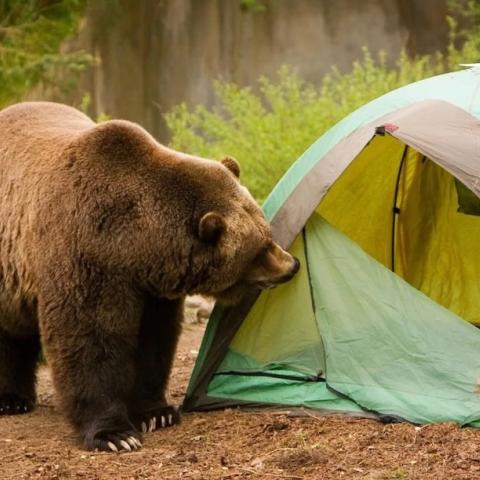Two bears died Sunday in Grand Teton National Park in Wyoming after they were struck by vehicles. The first, an adult female black bear, was struck on U.S. Highway 89 north of the Deadman’s Bar Road Junction around 7:30 p.m. The second, a male grizzly bear cub of the year, was hit later the same evening on the North Park Road (U.S. Highway 89) between the Pilgrim Creek Road Junction and Colter Bay Junction.
“These unfortunate incidents are an important reminder for all of us to slow down and be vigilant when we travel through the park,” Superintendent David Vela said in a release. “Especially with the traffic levels that we are seeing during this busy season, it’s important to obey posted speed limits, maintain a safe following distance behind other vehicles, and be especially watchful around dawn and dusk, when wildlife are more active.”
The circumstances preceding the incidents are unknown, as the motorists did not stop or report the incident in either case. Motorists are reminded that any collisions with wildlife must be reported as soon as possible to the Teton Interagency Dispatch Center at (307) 739-3301.
Teton Interagency Dispatch Center received a report from a passerby of an adult grizzly bear removing a cub from the roadway just before 10 p.m. Sunday night. Rangers responded to the scene, just south of Colter Bay Junction, and confirmed that an adult grizzly bear had removed a cub from the roadway. Grand Teton wildlife biologists searched the area in the early morning hours on Monday. The biologists discovered the deceased cub, which weighed between 40 and 50 pounds, approximately 40 yards off the road and removed it from the area. The bear's carcass will be preserved and used for educational purposes.
According to National Geographic, the cub was the offspring of famous Grizzly 399 and given the nickname “Snowy” for the whitish-blonde coloring of his face.
“The death of this cub is especially tragic since Grizzly 399 is nearing the end of her reproductive life, and sadly she has only replaced herself in the population with one adult female, Grizzly 610,” Wyoming Wildlife Advocates wrote on its Facebook page. “399's cub, known as Snowy or Spirit by the bear watchers of Grand Teton, was adored for its antics and notably white face and will be sorely missed.
A total of 37 animals are known to have been struck by vehicles on park roadways in 2016. One grizzly bear cub, two black bears, nine deer, two bison, nine elk, two coyotes, and one red fox were involved in those collisions, which do not always involve a confirmed mortality. Over 100 large wildlife are known to be hit on park roadways annually, with 118 in 2015 and 115 in 2014.
In addition to caution and vigilance on park roads, park visitors are reminded not to approach or interfere with park wildlife. The safe viewing distance for bears and wolves is 100 yards, while all other wildlife should be given at least 25 yards of space.




 Support Essential Coverage of Essential Places
Support Essential Coverage of Essential Places







Comments
EC, a nice response. My own experience is that speeding on park roadways is a serious problem. It is not only our own citizens, but visitors from countries all over the world. Employees with long commutes also have an issue. Many people are on tight schedules, many parks to see, short vacations, hotel/motel/campground reservations, airplanes to catch, but they love the park and want to see everything they can in a short timeframe. The most common question (next to where is the restroom), is" I have to be "somewhere" in 4 hours, what is the most important thing to see with the time I have? I meet them all the time in my fire duties. All nice people, but in a hurry. One example is Yosemite Valley where the average length of stay in the Valley by people in day use automobiles is under 3 hours. During the mid morning to late afternoon, Yosemite Valley can be very congested. Interestingly enough, at night it is quite uncrowded. It is tough on the rangers, and when it is added to peak visitor use days, the traffic congestion often times leads to short tempers on everyones part. The wildlife also suffers. In any case, a complex issue, but as Dr. Runte points out, at some point there are going to have to be some type of limits.
kurt, I apologize for calling you a democrat. If you were, my post would likely been censored. I still believe that MOST democrats are idiots and most stupidity in the parks is caused by people who identify as democrats.
Funny Bubba [or Bu - how many IDs do you have?]. It is actually the orange faced R candidate who has been censoring media. You just go ahead with as many generalizations as make it easy for you. Me? I was a conservative R thirty years ago, was on staff for both Jerry Ford and Ronald Reagan, but I evolved and don't affiliate with a party these days.
Dare I try to point out that some comments here speak volumes about the mentality of some who hold extreme views regardless of which side of the fence they happen to be on?